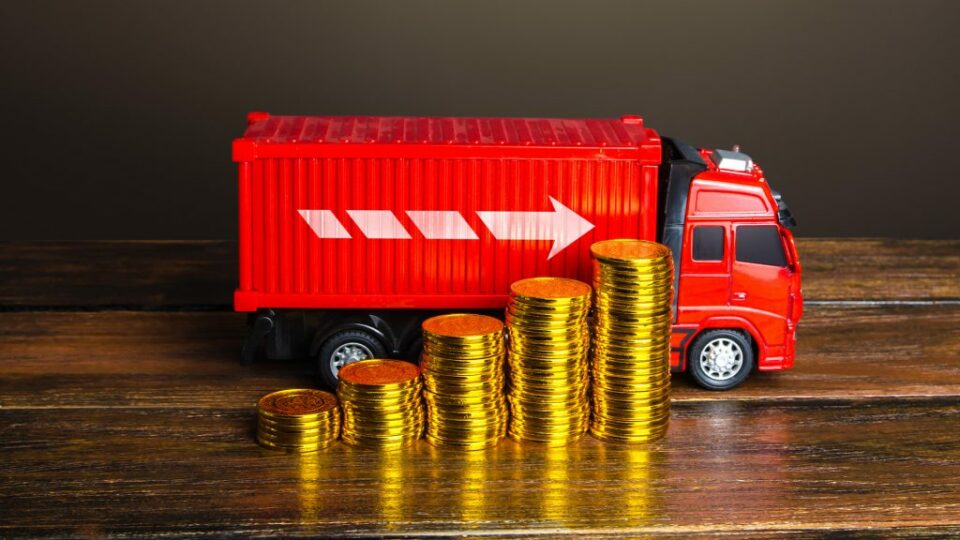Inflation appears to have peaked and markets are partying across the board. But if we examine the risks of global debt, is the optimism justified?
Key Takeaways:
- Global debt just reached 349% of global GDP. Each person carries an average debt load of $37,500, versus GDP per capita of just $12,000.
- Last year, we dealt with the short-term impacts of tighter monetary policy. This year, we will deal with the long-term impacts, which may prove to be even more problematic than 2022’s financial calamities.
- If the “Great Reset” does lie in our future, gold will serve as a crucial security blanket.
The Bulls Are Back?
Stocks, bonds, gold, silver, oil, copper – you name it, it’s up.
Consumer prices rose 6.5% from Dec 2021 to Dec 2022 – still hot, but a relief from the record numbers we saw this summer. We now find ourselves at an interesting juncture. Did the Federal Reserve’s aggressive rate hikes work? Will we avoid the much-dreaded stagflation?
Investors seem to think so. Everyone was chomping at the bit to start buying again, hoping to relive the 2021 “everything bubble” euphoria.
Rate-Hike Reactions
By now, we understand how rate hikes hurt the economy. Rising interest rates immediately make borrowing money more expensive. Companies and consumers may feel the need to tighten their belts and reduce spending, which grinds on the economy’s gears. Spending falls; market liquidity drops; earnings estimates drop; so on and so forth.
Higher yields also force an immediate repricing of assets. When interest rates rise, future company earnings begin to look less attractive, which damages stock valuations. Investors may opt for safer fixed-income products, such as bonds (or, in the case of 2022, just pour into cash).
This was last year’s story. The S&P 500 fell 20.14%. The tech-heavy NASDAQ 100 fell a whopping 33.75%.
In 2023 and beyond, we will deal with the long-term impacts of tighter monetary policy, which may prove to be even more problematic than 2022’s financial calamities.
The World Has a Debt Problem
According to S&P Global’s Global Debt Leverage report, global debt just reached 300 trillion US dollars, which is 349% of global GDP. “This translates to $37,500 of average debt for each person in the world versus GDP per capita of just $12,000.”
Rate hikes + lots of debt = bad news.
Consider the nature of debt. When someone takes out a loan, they pull purchasing power from the future to the present. Think about your mortgage: you acquired a lot of purchasing power up front, but you must pay it all back (plus interest) in the future. It’s the same when governments sell bonds or companies take out loans. When debt levels get out of control, as they have over the past few decades, economies get caught in a debt doom loop. All the extra purchasing power gets shoved into real estate and financial assets, artificially pumping up prices. To pay back their current obligations and keep up with rising asset prices, debtors must continuously pull purchasing power from the future.
Everything works fine until interest rates increase. All of a sudden, debtors can’t afford to take on more debt, and therefore cannot keep up with their current obligations. Rising interest rates not only make future debt more expensive, but current debt as well.
The Burden of Interest
Floating Rate Debt: Many loans have a floating interest rate, which means the interest rate adjusts to some benchmark (such as the federal funds rate). S&P Global estimates that 35% of global debt is floating. When interest rates rise, the interest expense automatically increases. If the debtor cannot afford the increased interest payments, they will default.
Refinancing at a Higher Rate: Some debtors may be forced to refinance their fixed-rate debt at a higher interest rate to free up cash. Everyone prefers to refinance at a lower rate, but this is not an option in a rising-rate environment.
Loan Reaches Maturity: If a loan reaches maturity but the debtor’s expenses still exceed their revenue, they may need to borrow more money to remain solvent. A consumer may put extra expenses on a credit card. A business may take out another loan from a bank, promising that future revenues will be strong enough to cover the debt. Governments cover their deficits by issuing more bonds. When rates rise, every additional bond issuance carries a higher interest cost, which must be covered with higher taxes or more money printing.
These are the long-term issues we face. The pre-COVID, ultra-low interest rate, free money party made it easy to stack up on debt. Now that central banks have been forced to ratchet up interest rates, we must face the consequences.
For these reasons and more, gold is looking pretty shiny. If the “Great Reset” does lie in our future, we believe gold will serve as a crucial security blanket.
Secure gold savings, without the excessive fees
Your weekly gold market commentary comes from our internal team of researchers and technical experts. Vaulted gives modern investors access to physical gold ownership at the best cost structure in the industry. With personal advising from industry experts and access to premier precious metals strategies, Vaulted is the key to life-long financial prosperity. Start protecting your portfolio today.
As always, thank you so much for reading – and happy investing!
Additional Resources:
Gold Is Getting Its Glitter Back (Bloomberg)
Household wealth optimism collapses, global survey shows (Reuters)
First Signs of Recession Pain Look Set to Emerge from Earnings (Yahoo Finance)
At Davos, Mood Is Somber as Many CEOs Question Economic Outlook (The Wall Street Journal)











